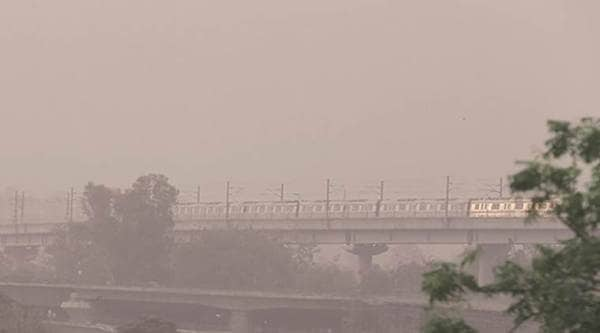 With most Indians staying indoors and limited plying of vehicles on roads, the air quality has improved significantly during the last 40 days or so, SAFAR scientists noted. (File)
With most Indians staying indoors and limited plying of vehicles on roads, the air quality has improved significantly during the last 40 days or so, SAFAR scientists noted. (File)
While there may be no direct link between atmospheric temperature and the spread of coronavirus as of now, ambient air pollution has very poor relation with the pandemic as well, said Gufran Beig, project director, System of Air Quality Weather Forecast and Research (SAFAR), run by Pune-based Indian Institute of Tropical Meteorology (IITM). Beig was speaking during the second webinar series, organised by the Ministry of Earth Sciences (MoES) on Tuesday.
However, SAFAR scientists, who have been tracking air quality both before and during the lockdown, have found some relation between Particulate Matter (PM) 2.5 levels and the mortality rate of Covid-19 patients in six major Indian cities with SAFAR’s monitoring network – Mumbai, Ahmedabad, Pune, Bengaluru and Chennai. PM 2.5 pollutants are the finest and most invisible, prolonged exposure to which can cause respiratory illness.
“As per our preliminary analysis, ambient air quality and mean temperature have no direct role in the mortality rate of due to Covid-19. However, in cities where the mortality has been high, corresponding PM 2.5 levels showcased about 80 per cent correlation, as on May 3. The correlation was with respect to the baseline (minimum) levels of PM 2.5 in each city,” said Beig.
With most Indians staying indoors and limited plying of vehicles on roads, the air quality has improved significantly during the last 40 days or so, SAFAR scientists noted. There were reports of far flung mountains being visible from Bihar and Punjab owing to clear air.
However, scientists warned that air pollution levels can never touch the zero mark. “The lockdown may have cut pollution caused by transportation or industries, but we noticed that pollution contributed by the burning of bio-fuel in the form of LPG, wood or similar sources used for cooking, remained,” Beig said.
Pollution records maintained by SAFAR indicate that Nitrogen Oxide (NOx) and Carbon Monoxide (CO) levels dropped anywhere between 80 to 87 per cent in Delhi, Mumbai and Pune during the nationwide lockdown, at least in the first phase.
The lockdown helped the SAFAR team measure the baseline levels of key parameters required for forecasting of air quality. The team now plans to recommend the newly established minimum levels of some gaseous parameters to the Central Pollution Control Board (CPCB), and similar agencies that are involved in policy making.
“Even though pollution levels and the time of exposure are relative, everybody is exposed to a certain minimum level of pollution, and that is called the baseline pollution. This can be shared for policy making and setting standards for cities,” he said.